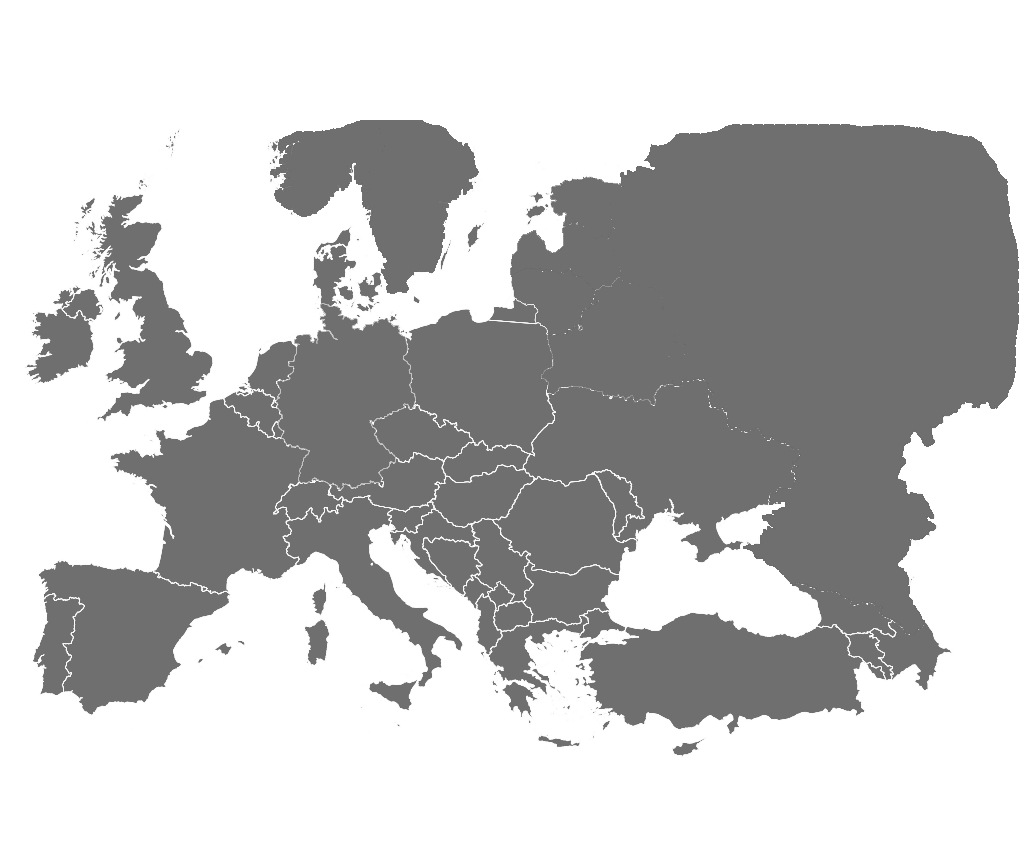According to the International Energy Agency (IEA), a world with zero emissions by 2050 is also a world with more jobs than today in transition. According to the “Net-Zero Emissions by 2050” report, the balance between added and lost jobs will be positive by 9 million by the end of this decade: five million will be the jobs lost globally as fossil fuels are progressively abandoned, 14 million will be created by clean energy. If we broaden our view to the transition as a whole, another 16 million new workers will be needed for the entire sector in the coming years, from building retrofitting to sustainable mobility. The IEA therefore envisages a total of 30 million new jobs by 2030 in the field of climate action.

In Europe
In Italy, the most comprehensive report on the potential of the transition is “Just E-volution 2030”, produced by The European House – Ambrosetti in collaboration with Enel and the Enel Foundation Centre for Studies. The analysis is European-based with a focus on our country. Taking into account the increase in electric products/technologies, the decrease in thermal products/technologies along all value chains and the introduction of new digital services made available by electrification, the net final effect on production value will vary, by 2030, between +113 billion Euros and +145 billion euros for the entire European Union.
House – Ambrosetti in collaboration with Enel and the Enel Foundation Centre for Studies. The analysis is European-based with a focus on our country. Taking into account the increase in electric products/technologies, the decrease in thermal products/technologies along all value chains and the introduction of new digital services made available by electrification, the net final effect on production value will vary, by 2030, between +113 billion Euros and +145 billion euros for the entire European Union.
Within the EU, there will be 1.4 million new jobs, thanks to the replacement of fossil fuels with renewables and the electrification of various sectors of the economy. The Italian slice of this new sustainable wealth will oscillate, according to this study, between 14 and 23 billion euros, the positive balance of jobs will be 173,000 new jobs.
In Italy
In Italy, however, there is no comprehensive aggregated study in Italy that takes into account the entire industrial production and how it could evolve in a scenario moving towards zero emissions. This is a problem because policymakers and industrial operators lack a systematic vision. According to Chiara Di Mambro, an analyst for Ecco Climate and former experience in the Ministry of Ecological Transition, “Each production would need its dedicated study. There is currently no national assessment that considers all the implications in terms of value chains. This means that we are navigating without maps. There is a lack of industrial strategy and development ideas for Italy because there are no aggregated data on which to base them.”
One of the most comprehensive analyses released in recent months is “La transizione ecologica che serve all’Italia” (The Ecological Transition Italy Needs), a study by Legambiente released a few weeks before the September 2022 elections. It contains 100 economic proposals for the government, aggregated by twenty topics, to shift the perspective of viewing the transition as a “bloodbath” and instead recognize it as an opportunity to seize.
“We could group this flow of green growth into three different macro-areas that proceed at different speeds,” explains Stefano Ciafani, President of Legambiente. “The first is the actual energy transition, where the renewable energy supply chain is finally gaining momentum after a decade of delays. Then there is the automotive sector, which is still lagging behind in Italy compared to the deadline set by the European Commission for the phase-out of combustion engines by 2035. Finally, there is the circular economy, an area where Italy has been among the European leaders for some time.”
Transition Stories
The manifesto story for the energy transition is undoubtedly the expansion of bifacial solar panel production at the Enel Green Power factory in Catania. It has the prospect of becoming the largest in Europe, with a fifteen-fold expansion of production capacity from 200MW to 3GW. This expansion will create 1,000 jobs in one of the most economically depressed areas of Italy. The international context further amplifies the project’s significance. In 2021, 25% of solar panel installation projects in Europe were postponed or even canceled due to a lack of raw materials, which are now mostly imported from the Far East. Out of ten panels produced worldwide, seven are made in China and one in South Korea.
The scenarios are expected to change with the Inflation Reduction Act (IRA), a $700 billion financial bazooka voted by the United States Congress in the summer of 2022 to bring clean economy supply chains back to the United States. The European Union is also attempting to react to the American plan. Brussels knows it cannot remain isolated or dependent on long and unpredictable value chains. Projects like the one in Catania have the potential to revitalize Europe’s previous leadership in the sector, which was overshadowed by China.
Another significant production center will emerge from the partnership between Enel and Comal to open a solar tracker factory within the Montalto di Castro power plant in the province of Viterbo. Trackers are devices that allow photovoltaic panels to orient and follow the sun throughout the day. The workforce will consist of 70 employees who will come from the workforce of decommissioned thermoelectric plants in the area, demonstrating a good practice of training and a just transition. The tracker production will support photovoltaics with a potential capacity of 1GW per year.
As Ciafani explains, “it is particularly significant that this production starts in Montalto, where an attempt was made in vain to build a useless nuclear power plant before the 1987 referendum”. Workers in solar panel and tracker factories will be at the forefront of the 173,000 new jobs in the energy sector in areas that will go beyond the renewable sources supply chain: integration of vehicles with the network, sensors for sustainable mobility, home automation, demand response systems to make the network resilient and efficient, smart network management and all the various intersections between the energy and digital transitions.
The difficult transition of the car
The situation in the automotive sector is more complex. The most worrying, mentioned and often disputed data is that of Anfia, Associazione nazionale filiera industria automobilistica (national association of the automotive industry), according to which 70,000 jobs would be lost due to the end of the sale of gasoline, diesel or hybrid engines decreed by the European Union with the Fit for 55 climate package.
In Italy, the sector has often played in the rearguard, calling for delays, exceptions or postponements at a political level instead of proceeding quickly towards electrification. The vicissitudes of the Mirafiori plant in Turin and that of the former Gkn in Campi Bisenzio (Florence) are, in this sense, two sides of the same complicated story. Stellantis has converted the Mirafiori hub (Turin) to produce the electric 500. In 2022, the plant had already reached the quota of 100,000 cars. The paradox, however, is that the plant has lost 4,000 workers in four years.
A step towards the electrification of the sector will be the opening of one of the three European gigafactories of Stellantis for the production of batteries in the Termoli (Molise) plant. Production is expected to start in 2026, with a total of 2,000 employees, when it reaches full capacity.
But the sector that is struggling the most is that of related industries and components: the interruption of the production of drive shafts for Maserati and Ferrari in the former Gkn of Campi Bisenzio was proof of this, with 500 redundancies and the closure of the factory due to relocation. To date, the former Gkn is occupied by a workers’ collective, which has developed its autonomous industrial plan, together with the Sant’Anna High School of Pisa, to conduct production within the framework of the ecological transition, producing drive shafts of electric buses for local public transport, components for renewable sources and even bicycles. The plan is innovative and ambitious but has so far been ignored by the new owners and the two governments that have managed the trade union table in recent years as if there were no possible horizon for the sector beyond delocalisation and industrial decline.
Be circular
In 2022, in Italy, according to Fondazione Symbola, 241 companies across sectors launched productions linked to the circular economy. Globally, the circularity rate of the economy fell from 9.1% to 8.6% in the Covid years. However, Italy is the one that has recorded the most significant increase in productivity of the resources consumed, an indication of the good functioning of the circular economy.
According to the latest Circular Economy Network study, in Europe, the average (at purchasing power parity) is 2.1 Euros of GDP for each resource consumed, against 3.5 Euros in Italy (+60%). There are 519,000 employees in the sector (the second country in Europe after Germany).
“The most interesting part of this growth is that it sees the central-south as the protagonist, with new plants and investments in all regions,” explains Ciafani, the President of Legambiente, mentioning the anaerobic biodegradation plants for the production of biogas or biomethane and composting of Anzio and Pontinia in Lazio, Capaccio in Campania, Erchie in Puglia, Caltanissetta and Assoro in Sicily. “By integrating the development of the renewable sources chain, there is the potential to create a widespread industrial triangle, on the Milan-Turin-Genoa model of the 1960s, but with the South driving.”
However, one of the most suggestive cases comes from Friuli, in San Giorgio di Nogaro, with the I.Blu plant, a startup financed by the multi-utility company Iren. It is a plant for recycling mixed plastic materials, the most complex to process traditionally. I.Blu has instead found a way to use them to create a new polymer called Blu, a circular secondary raw material that can be used in various sectors but above all in electric furnace steel mills, those that produce steel from scrap instead of coal, reducing CO2 emissions related to production by 30%.
In this way, every 115,000 tonnes of plastic waste is converted into 40,000 tonnes of Blu Air to increase production up to 600,000 tonnes a year in the next few years. As Chiara Di Mambro explains, “this is an interesting case of industrial symbiosis, a plastic product that helps to decarbonise one of the sectors where it is more difficult to reduce emissions, through an all-Italian patent and created by a company that deals with energy and waste. The Italy of districts and startups is proceeding rapidly towards the transition with ideas and projects, the problem is that a national strategic plan is missing, so it does it in an unbundled way.”
Sources:
- https://www.iea.org/commentaries/the-importance-of-focusing-on-jobs-and-fairness-in-clean-energy-transitions
- https://www.enel.com/it/media/esplora/ricerca-comunicati-stampa/press/2019/09/studio-just-e-volution-2030-di-enel-e-the-european-house—ambrosetti-dalla-transizione-energetica-impatti-socio-economici-positivi-in-europa-
- https://www.ansa.it/canale_motori/notizie/analisi_commenti/2022/06/08/allarme-dellanfia70mila-posti-a-rischio-in-italia_6348cfa0-5332-4f96-b9f2-96ee0eff39db.html
- https://circulareconomynetwork.it/wp-content/uploads/2022/04/Sintesi-Rapporto-sulleconomia-circolare-in-Italia-2022.pdf






